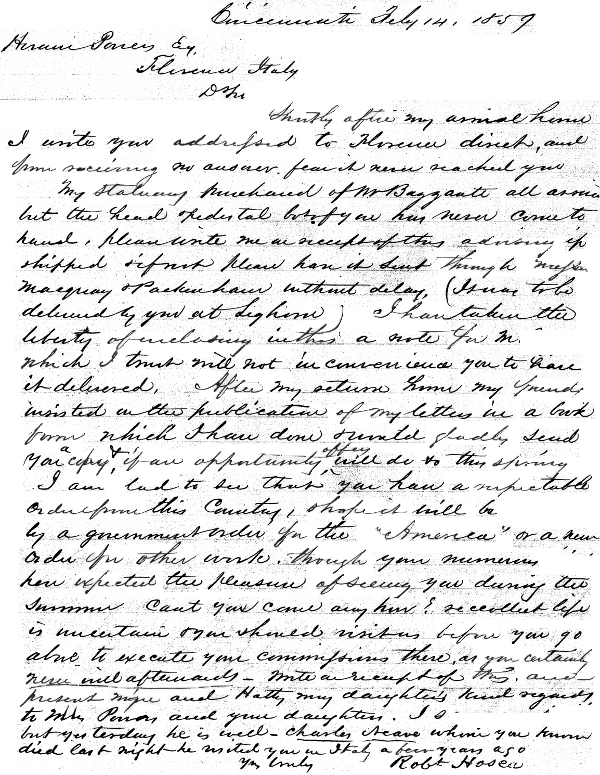The Real Cause of the U.S. Civil War
Robert Hosea to Hiram Powers, February 14, 1857
Page 1
Cincinnati Feby 14, 1857
Hiram Powers was a Cincinnati sculptor who was in 1857 working in his studio in Florence, Italy. Hosea was a patron of Powers and purchased sculpture from him.
The text of the letter, because it is unrelated to the cause of the Civil War, is not transcribed here. But because Hosea signed with his full name and because the handwriting is the same, it provides an opportunity to confirm that he was the author of the Buckeye letter to Lincoln of February 7, 1861.
For example, the uniquely formed word "opportunity" in line 15 of this letter has its twins in the Buckeye Letter on page five at line twenty-three and on page eight at line twenty-one.
The word "opportunity" is here. ------------------->
The similarly formed word "opportunity" appears in Hosea's letter to Salmon P. Chase of May 18, 1860, on line two of page two (item four of the document series).
Powers produced a statue of a nude female enchained at the wrists, entitled "The Greek Slave." It was a work of stunning beauty that was the most (an Assumption College page link) popular work of art in America in the mid-nineteenth century. It was shown at public exhibitions in major U.S. cities. Turkish enslavement of Greeks was a popular interest at the time. Political abolitionists in the U.S., however, capitalized on the popularity of the statue to propagandize the slavery theme for their own purposes.

Original document at the Cincinnati Historical Society Library
http://library.cincymuseum.org